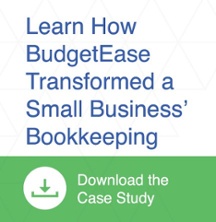 As unpleasant as it is, you probably have debt that you are never going to collect. This is a good time to write off bad debt and clean up your A/R Aging report. The proper way to account for bad debts is with the Allowance Method. However, many small businesses use the Direct Write-Off Method when dealing with bad debts. This method expenses bad debts at the time it is deemed uncollectible.
As unpleasant as it is, you probably have debt that you are never going to collect. This is a good time to write off bad debt and clean up your A/R Aging report. The proper way to account for bad debts is with the Allowance Method. However, many small businesses use the Direct Write-Off Method when dealing with bad debts. This method expenses bad debts at the time it is deemed uncollectible.
Setting up for the Direct Write-Off Method
- Check to see if a product/service for bad debt expense exists
- Gear > Lists > Products and Services
- If nothing related to bad debt exists
- New Product and Services > Service
- Name: Bad Debt Expense
- Untick the box "Is taxable"
- Income account: Choose the expense account associated with bad debts (may need to be added in the COA)
Using the Direct Write-Off Method
- All or part of an invoice is deemed uncollectible
- Go to the customer responsible for the unpaid invoice
- New Transaction > Credit Memo
- Under Product/Service type the name for the bad debt account created in the above step
- Enter the amount equal to the partial or full invoice balance that has been deemed uncollectible
- Save and close (Ctrl + Alt + D)
- QBO may automatically match the credit memo to the open invoice. Verify this was done and if so that it was done accurately to the intended invoice if there is more than one open invoice.
- Improper matching will leave a messy Open Invoice report. The customer balance may be correct, but the Open Invoice report will show an in/out unapplied transaction.
- If not applied, from the customer screen, click Receive Payment under the Action column. The credit can now be applied.
FYI: The behind-the-scenes journal entry is:
| Bad debt expense | X | |
| Accounts Receivable | X |
The Allowance Method - FYI
The reason this method is preferable is because it matches the expense with the related revenue. This is done by recording bad debt expense periodically based on a percentage of sales or accounts receivable.
Allowance for Doubtful Accounts is a contra current asset account associated with Accounts Receivable.
The monthly journal entry would be:
| Bad debt expense | X | |
| Allowance for doubtful accounts | X |
The journal entry to write off a specific account would be:
| Allowance for uncollectible accounts | X | |
| Accounts receivable | X |
If you are taking a big hit in your P&L because of write-offs, then now is a good time to consider switching methods. The Allowance Method is a way to not have to take such a large hit on any given P&L. Need help? Give us a call. Cleaning up your QuickBooks to provide you with better financial information is our mission.





